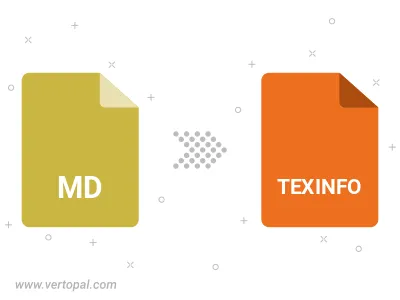Convert MD to TEXINFO
Convert MD markup documents to TEXINFO format, edit and optimize documents online and free.

The MD file extension stands for "Markdown Documentation", a lightweight markup language used primarily for creating formatted text using a plain-text editor. Originally created by John Gruber in 2004, Markdown aims to be an easy-to-read and easy-to-write syntax for web content creation. Its primary use is in documentation files, readme files, and other technical documents where both simplicity and readability are paramount. The MD extension facilitates smooth conversion into HTML and other formats, making it an essential tool for developers and technical writers.
The Texinfo is a documentation format developed by the GNU Project, created by Richard Stallman and Bob Chassell. It uses plain text files with @-commands to generate both online and printed documentation from a single source. Texinfo files, with the TEXI extension, support various output formats like HTML, PDF, and Info. This system simplifies maintaining consistent documentation across multiple formats.
Choose your MD markup document for uploading to our MD converter.
For an advanced conversion, use the MD to TEXINFO optional tools available on the preview page and click the Convert button.
When the conversion status changes to successful, click on the Download button to get the final TEXINFO document.

To change MD format to TEXINFO, upload your MD file to proceed to the preview page. Use any available tools if you want to edit and manipulate your MD file. Click on the convert button and wait for the convert to complete. Download the converted TEXINFO file afterward.
Follow steps below if you have installed Vertopal CLI on your macOS system.
cd to MD file location or include path to your input file.Follow steps below if you have installed Vertopal CLI on your Windows system.
cd to MD file location or include path to your input file.Follow steps below if you have installed Vertopal CLI on your Linux system.
cd to MD file location or include path to your input file.